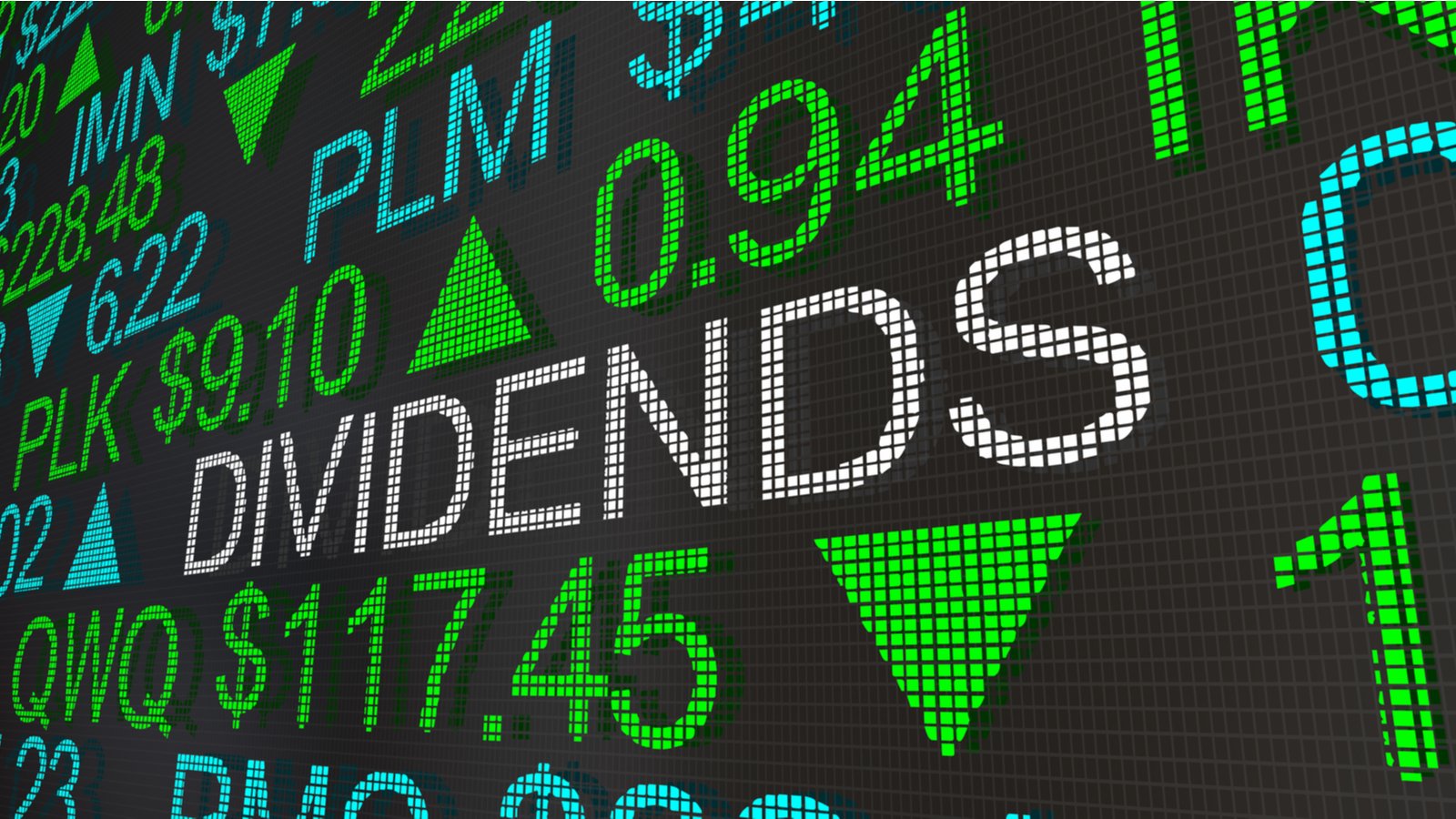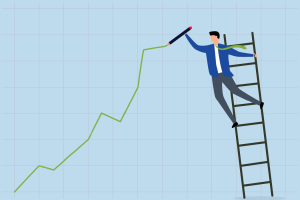
After a downturn that ran from late summer to early fall, the stock market reversed higher on two pieces of good news. First, inflation seems to have stabilized. Second, the Federal Reserve paused its rate hike increases. This combination changed investor sentiment. The Nasdaq Composite, Russell 2000, S&P 500, and Dow Jones Industrial Average have all gained in the past month. In addition, 10 of the 11 sectors have positive returns.
Favorable market trends suggest that previously struggling stocks may recover, providing attractive share price appreciation, earnings growth, and dividend yields. Although many dividend stocks exist, we prefer dividend growth stocks, especially ones with high growth rates.
These companies usually have climbing revenue and earnings per share, translating to brisk gains in share price and dividend payouts. Below are three high-dividend growth stocks to choose from that can generate solid total returns.
Dick’s Sporting Goods (DKS)

Dick’s Sporting Goods (NYSE:DKS) is the largest sports and leisure retailer in America. It operates 869 stores in 47 states, a figure which includes specialty outlets. Dick’s sells large brands like Nike, Yeti, Peloton, Wilson, Ping, The North Face, Wilson, and Brooks. It also has an assortment of private-label brands.
Total sales were over $12.34 billion in fiscal 2022 and $12.7 billion in the past 12 months. Like most specialty retailers, Dick’s grows its market share by adding more stores and more products within its stores. So far, the company’s success has allowed it to capture around 8% of the market share, up from 7% in 2019. This is thanks to its wide selection, decent pricing, and an uptick in footwear sales.
From a dividend growth perspective, the company is a current Dividend Challenger with a 9-year history of increases. The five-year growth rate is roughly 23.5% because Dick’s only started paying a dividend in 2013. Rising earnings per share suggest more to come, mainly because the payout ratio is miniscule at around 16%. The low percentage indicates solid dividend safety supported by high-interest coverage of 20x and a moderate leverage ratio of 1.2x. Moreover, the dividend quality grade is an A.
Dick’s stock price is flat for the year. However, excellent third-quarter results renewed interest in equity. The price-to-earnings ratio is low at 9.9x, below the broader market. Investors are therefore essentially paid to wait for a turnaround in DKS stock with a 3.3% dividend yield.
Dollar General (DG)

Dollar General (NYSE:DG) is the largest of the so-called dollar stores. Today, most items are priced at $5 or less. The retailer operates nearly 19,500 stores in all 50 states. The firm is also expanding internationally, launching its first Mi Super Dollar stores in Mexico. Dollar General has been working to open 1,050 new stores in 2023.
Despite this growth, this has not been a good year for Dollar General and DG stock.
A combination of high inflation and high interest rates has stressed its core customer. As a result, the company needed to slash revenue and earnings estimates, causing the stock to plummet. The share price is down nearly 50% year to date. However, Dollar General grows like most retailers by selling more in its outlets and adding to its footprint. The firm’s small store size, Popshelf brand, and international expansion mean future growth paths exist once inflation subsides.
The retailer is another Dividend Challenger with a nine-year streak. The trailing dividend growth level is about 27.4% during this time. Despite the recent struggles, Dollar General’s dividend payout ratio formula, a measure of safety, gives a low value of 24.5%. This indicates more future increases to come.
Because the share price has declined almost 50%, the valuation has dropped to 16.9x, at the lower end of its five- and 10-year ranges. Despite a weaker outlook, Dollar General is still growing, and results may improve if inflation returns to sub-2% levels. Investors should look at this stock now.
Thermo Fisher Scientific

Thermo Fisher Scientific (NYSE:TMO) is a giant life sciences products, diagnostics, and services company. Because most customers are other businesses, the firm may not be that well-known. However, it has matured into a $189 billion market capitalization company. Thermo Fisher Scientific operates through four business segments: Life Sciences Solutions, Analytical Instruments, Specialty Diagnostics, Laboratory Products and Biopharma Services.
Thermo Fisher is snowballing through acquisitions. It has spent tens of billions completing dozens of purchases. It added Life Technologies Corporation for $13.6 billion in 2013, Patheon for $7.2 billion in 2017, and many smaller companies in the years since. Besides M&A, the firm operates in growing life science markets. We expect the top and bottom lines to grow further because of end markets and acquisitions.
The company is relatively new as a dividend stock, starting distributions in 2013 and increasing them in 2018. Consequently, Thermo Fisher is a Dividend Challenger. The past 5-year growth rate is 14.9%. We expect the double-digit increases to continue due to the minimum payout ratio of roughly 5.2%. The company’s net debt is rising because of acquisitions, and the leverage ratio has reached 2.6x. But it has an investment-grade credit rating.
TMO stock typically trades at an elevated valuation between 18x and 26x. The current forward P/E ratio is 21.6x in the middle of the range. Although not a deal, dividend growth investors may want to dip into this stock now.
On the date of publication, Prakash Kolli held a LONG position in DG. The opinions expressed in this article are those of the writer, subject to the InvestorPlace.com Publishing Guidelines.






